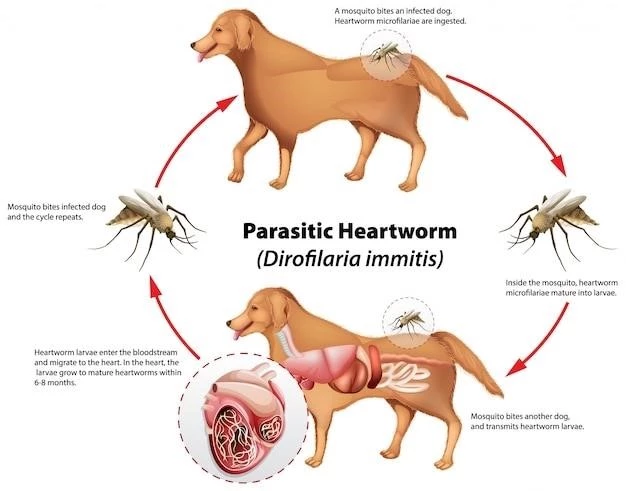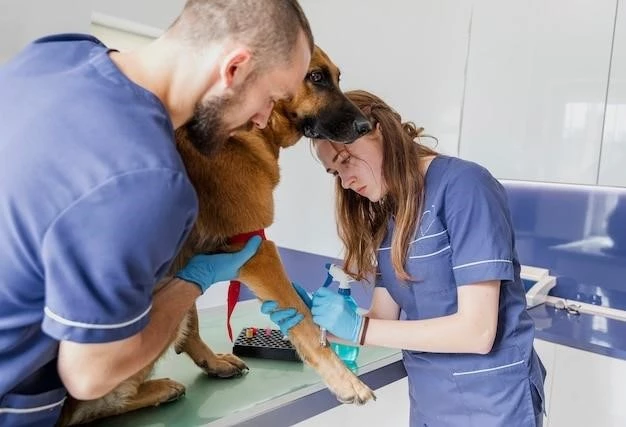Introduction
Pericardial defect diaphragmatic hernia is a complex condition encountered in both humans and animals, presenting significant challenges.
Overview of Pericardial Defect Diaphragmatic Hernia
Pericardial defect diaphragmatic hernia is a complex condition encountered in both humans and animals, presenting significant challenges. It involves a protrusion of abdominal contents into the pericardial sac due to a defect in the diaphragm. This condition can lead to severe complications like dyspnea, collapse, and even death in affected individuals. Understanding the causes, symptoms, diagnosis, and treatment options is crucial for effectively managing this rare malformation.
Peritoneopericardial Diaphragmatic Hernia
Peritoneopericardial diaphragmatic hernia is an uncommon congenital malformation that can lead to severe complications for cats and dogs.
Causes and Symptoms
Peritoneopericardial diaphragmatic hernia is primarily a congenital malformation that allows the passage of abdominal contents into the pericardial sac. Symptoms may include dyspnea, collapse, and even death, emphasizing the severity of this condition.
Diagnosis and Treatment
Diagnosis of peritoneopericardial diaphragmatic hernia involves imaging modalities like echocardiography, CT scans, and MRI to confirm the presence of abdominal contents in the pericardial sac. Treatment typically involves surgical intervention to repair the diaphragmatic defect and prevent further complications associated with this rare malformation.
Diaphragmatic Hernia
Diaphragmatic hernia involves the protrusion of abdominal contents into the thoracic cavity through a defect in the diaphragm. It can be congenital or acquired, with varied incidences and potential risk factors.
Types⁚ Congenital vs. Acquired
Diaphragmatic hernia can manifest as congenital, present from birth, or acquired, occurring later in life due to factors like trauma. Understanding the differences between these types is crucial for appropriate management and treatment decisions.
Incidence and Risk Factors
The incidence of diaphragmatic hernia varies but is often reported at approximately 0.8-5 cases per 10,000 births. Risk factors for acquired diaphragmatic hernias include traumatic injuries, while congenital cases may result from developmental anomalies. Understanding these factors is crucial for proper diagnosis and management of this condition.
Intrapericardial Diaphragmatic Hernia
Intrapericardial diaphragmatic hernia is a rare clinical condition involving the protrusion of abdominal viscera into the pericardium, often leading to symptoms like abdominal discomfort or vomiting.
Clinical Presentation and Complications
Intrapericardial diaphragmatic hernia often presents with symptoms such as abdominal discomfort or vomiting, indicating the presence of abdominal viscera in the pericardium. Complications may include severe hemodynamic disorders if not diagnosed and treated promptly.
Management and Surgical Considerations
Management of intrapericardial diaphragmatic hernia typically involves surgical intervention to repair the diaphragmatic defect and ensure the proper containment of abdominal viscera within the pericardial cavity. Surgical considerations often focus on addressing the herniated abdominal organs and restoring normal anatomical positioning to prevent potential complications associated with this rare clinical condition.
Pericardial defect and diaphragmatic hernia can present significant challenges due to potential complications and risks associated with this complex condition.
Pericardial Defect and Its Implications
Pericardial defect and diaphragmatic hernia are complex conditions with severe implications due to potential complications and risks associated with this rare malformation.
Diagnosis and Associated Risks
Diagnosing pericardial defects involves imaging modalities like echocardiography, CT scans, and MRI to assess the extent and impact of the defect on cardiac function and other organs. Associated risks include potential herniation and strangulation of cardiac chambers, which can be life-threatening if not promptly addressed.

Acquired Anterior Diaphragmatic Hernia
Acquired anterior diaphragmatic hernia can result from thoracic trauma, presenting rare challenges in post-cardiac surgery patients.
Relationship with Cardiac Surgery
Acquired anterior diaphragmatic hernia can be a rare complication following cardiac surgery, especially in association with pericardial hernia. Understanding the potential relationship with cardiac procedures is crucial for effective management and surgical considerations in postoperative patients.
Treatment Approaches and Outcomes
Treatment of acquired anterior diaphragmatic hernia often involves surgical repair to address the herniated organs and close the diaphragmatic defect, aiming to prevent further complications. The outcomes following surgical intervention are generally favorable, with careful postoperative management to ensure optimal recovery and long-term outcomes for affected individuals.
Protrusion of Abdominal Viscera
The protrusion of abdominal viscera into the pericardium can lead to significant pathophysiological consequences and complications, necessitating appropriate surgical techniques for correction.
Pathophysiology and Complications
The pathophysiology of protrusion of abdominal viscera into the pericardium involves intricate anatomical abnormalities that can lead to complications such as hemodynamic disorders and potential strangulation of cardiac structures. Timely recognition and appropriate surgical techniques are crucial for managing these complex complications.
Surgical Techniques for Correction
Surgical correction of protrusion of abdominal viscera into the pericardium typically involves repair of the diaphragmatic defect and restoration of normal anatomical positioning of the organs. Various surgical techniques may be employed to correct the herniation and ensure proper containment of abdominal contents, with the goal of preventing further complications associated with this challenging condition.

Diagnosis and Imaging
Accurate diagnosis of pericardial defects often involves imaging tools like echocardiography, CT scans, and MRI to visualize the anatomical abnormalities associated with this condition. These diagnostic modalities play a crucial role in identifying the presence of congenital or acquired defects in the pericardial region.
Role of Echocardiography and CT Scan
Echocardiography and CT scans play a crucial role in accurately diagnosing pericardial defects by visualizing anatomical abnormalities. These imaging modalities aid in identifying congenital or acquired defects in the pericardial region, guiding appropriate management strategies for patients with pericardial defect diaphragmatic hernia.
Magnetic Resonance Imaging in Differential Diagnosis
Magnetic Resonance Imaging (MRI) plays a critical role in the differential diagnosis of pericardial defects, allowing for precise differentiation between partial and complete absence of the pericardium. This imaging modality provides valuable insights into the structural anomalies present in complex cases of pericardial defect diaphragmatic hernia, aiding in accurate diagnosis and treatment planning for affected individuals.
Surgical intervention for pericardial defects is essential to prevent complications such as diaphragmatic hernia, focusing on timely correction and long-term patient care for optimal outcomes.
Surgical Correction of Pericardial Defects
Timely surgical intervention is crucial in correcting pericardial defects to prevent complications such as diaphragmatic hernia. Long-term prognosis and follow-up care play a significant role in ensuring optimal outcomes for affected individuals.
Long-Term Prognosis and Follow-up Care
Long-term prognosis and follow-up care are essential components of managing individuals with pericardial defects post-surgical correction. Regular follow-up evaluations ensure optimal recovery, monitor for potential complications, and enhance the overall quality of life for patients with a history of pericardial defect diaphragmatic hernia.
Congenital diaphragmatic hernia is a rare condition where there is a hole in the diaphragm, allowing organs to move into the chest cavity. This birth defect requires surgical management in newborns for optimal outcomes.
Congenital Diaphragmatic Hernia
Congenital diaphragmatic hernia (CDH) is a rare condition where there is a hole in the diaphragm, allowing organs to move into the chest cavity. Surgical management is critical for optimal outcomes in newborns with CDH, addressing developmental abnormalities and ensuring long-term care.
Surgical Management in Newborns
Surgical management in newborns with congenital diaphragmatic hernia (CDH) involves repairing the diaphragmatic defect to prevent herniation of abdominal organs into the chest cavity. These surgical interventions aim to address developmental abnormalities, ensuring optimal outcomes and long-term care for affected infants.
Birth Defects and Associated Conditions
Individuals with congenital diaphragmatic hernia may have additional anomalies such as facial clefts, reflecting the complexity and potential for multidisciplinary care required to address these associated conditions.
Facial Clefts and Other Anomalies
Individuals with congenital diaphragmatic hernia may present with facial clefts and other anomalies, requiring a multidisciplinary approach to care to address the complex needs associated with these conditions.
Multidisciplinary Approach to Care
The management of individuals with congenital diaphragmatic hernia and associated anomalies requires a multidisciplinary approach to care, involving specialists from various fields to address the diverse needs of the patients effectively. This comprehensive care strategy ensures optimal outcomes and improved quality of life for individuals with complex congenital conditions.
Pericardial Hernia Repair Techniques
Repairing pericardial hernias involves closure of diaphragmatic defects and meticulous reconstruction of the pericardium, utilizing specialized suture techniques to ensure a secure repair and optimal outcome for patients with diaphragmatic hernias.
Closure of Diaphragmatic Defects
Closure of diaphragmatic defects in pericardial hernia repair involves meticulous surgical techniques aimed at restoring the integrity of the diaphragm and ensuring proper containment of abdominal contents within the pericardial cavity. Specialized suture techniques are utilized to achieve a durable and effective closure, addressing the complex nature of diaphragmatic defects in cases of pericardial hernia.
Suture Techniques and Pericardial Reconstruction
Utilizing precise suture techniques is essential in pericardial hernia repair to ensure effective closure of diaphragmatic defects and meticulous reconstruction of the pericardium. Specialized suture approaches play a crucial role in achieving durable repairs and restoring the structural integrity of the pericardial region, enhancing the overall success of surgical interventions for patients with diaphragmatic hernias.
Management of Pericardial Defects
Therapeutic strategies and postoperative care play a crucial role in managing pericardial defects effectively, emphasizing long-term follow-up care to optimize patient outcomes and reduce the risks associated with diaphragmatic hernias.
Therapeutic Strategies and Postoperative Care
Effective management of pericardial defects involves implementing therapeutic strategies tailored to each patient’s condition post-surgical correction. Vigilant postoperative care is essential to monitor for any potential complications and ensure optimal recovery for individuals with diaphragmatic hernias associated with pericardial defects.
Future Directions in Research and Treatment Innovations
Ongoing research in the field of pericardial defects focuses on innovative treatment approaches and advancements in surgical techniques to enhance outcomes for individuals with diaphragmatic hernias associated with pericardial defects. Future directions aim to improve diagnostic accuracy, refine therapeutic strategies, and explore minimally invasive interventions for more effective management of these complex conditions.
